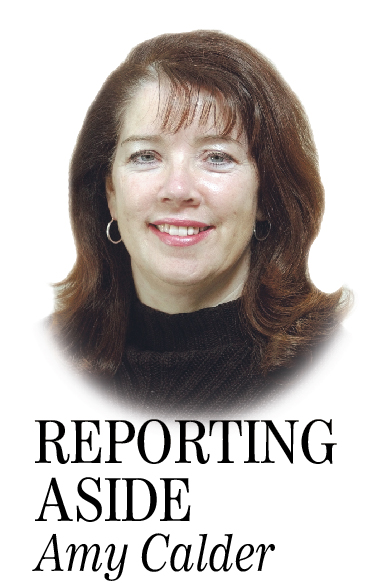I stood peering over the top of Grammie’s buffet in our dining room, checking the level of coins in my glass jar.
I was a kid in the ’60s, saving up money for the Skowhegan State Fair, which arrived in late summer every year. Collecting enough quarters, nickels and dimes to fill the jar to its screw-on cover took a long time.
I saved all year, watching the collection grow. As I did, I dreamed of cotton candy, candied apples, Ferris wheel rides and bizarre characters who annually inhabited the fairgrounds.
There were sword swallowers, giant snakes, fire eaters and scantily-clad women dancing on stages with drawn curtains, trying to lure men into their girly shows. There were creatures billed as half-human, half-animal, bearded ladies and houses of horror.
Weeks before the fair arrived, my brain went wild, imagining all those strange and interesting people, including folks who came into town from the willywacks once a year and whom I loved to watch.
We kids were bug-eyed at the odd toys and stuffed animals hanging from game booths where you could fire a pop gun, toss rice bags or throw darts to score a prize. One year, I took home a cheap tiny plastic doll tied to the end of a stick for successfully hitting a target with a fake handgun. I eyed that prize curiously for days afterward.
It was August and the fair represented the last hurrah for us kids before we headed back to school after Labor Day. The mornings were cool, the afternoons hot and dry and the aromas wafting from the fairgrounds enticing.
Onions and hot dogs sizzled on open stove tops, french fries cooked in giant vats of hot oil and cotton candy spun around on sticks behind glass windows. It all sent us swooning and salivating.
Eerie tunes blasted from the merry-go-round, whose horses seemed to be alive, their eyes following us as they whizzed up, down and around. Signs along the midway advertised beano games, beds of nails, frogmen and fortune tellers.
For an admission fee you could patronize side shows to view freaks of nature. I was drawn to those oddities every year, including the one boasting the only surviving man with no head, no arms and no legs — “You’ll NEVER see this again in your LIFETIME!” a recorded voice screamed to passersby.
I was hooked. I paid my dollar and entered a dark tent with other curiosity seekers who marched in single file along a roped-in, grassy corridor and stopped to peer into a wooden box illuminated from above by a light-bulb. My hopes plummeted as we found ourselves gaping at what clearly was a man’s torso crafted from a brown paper bag painted the color of flesh with an electronic mechanism underneath causing it to beat like a heart.
A few more admissions to shows like that over the years cured me of my yearnings, affording me more cash to spend on rides and treats.
The fair, the oldest continuously running agricultural fair in the country, also offered the mundane in the 4-H and Grange exhibits packed with shelves of baked goods and fresh garden produce that toward the end of the fair had turned wilted and moldy.
Women sold fudge, sweaters and hand-sewn dolls in the exhibit halls while outside farmers sheared sheep and milked cows in the agricultural barns. Under the ice arena, spectators lined the bleachers to watch tractor pulls and equestrian competitions. The grandstand also packed in fairgoers who came to see country music stars and big bands or watch harness racing.
My favorite part of the fair, though, cost nothing and left me with the best memories of all. I had the privilege of accompanying my father, a horse lover, to the fairgrounds early mornings when all was quiet and the dew was still on the grass.
We visited the race horses, stabled in long, low barns at the northern edge of the fairgrounds. They munched on hay, nudged their stall mates, often a dog or cat, and poked their heads over the stall doors to check us out. We brought carrots and apples to feed them and enjoyed feeling their warm muzzles on our palms as they snatched and chewed them up.
During fair week, I’m always transported back to those lazy mornings when the scent of hay wafted through the stables and the only sounds were our voices as we talked to the horses and the tap, tap, tap of a farrier shoeing one in a nearby stall.
I thank my father, gone four years now, for those visits and for the gift he gave me of sweet, lifelong memories.
Amy Calder has been a Morning Sentinel reporter 27 years. Her column appears here Mondays. She may be reached at acalder@centralmaine.com. For previous Reporting Aside columns, click here.
Send questions/comments to the editors.


